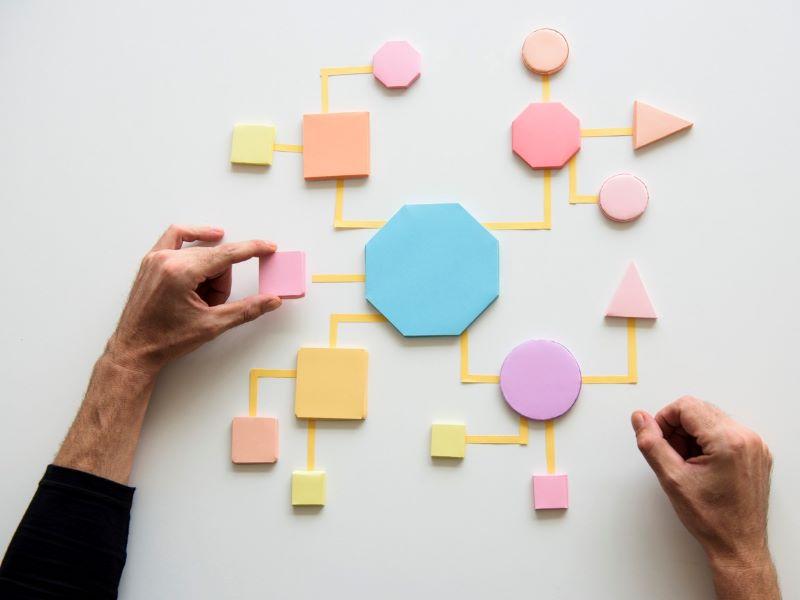Understanding the mind and how thinking occurs has been a challenge for philosophers, scientists, theorists, educators and artists throughout history. As such, the ideas about how we learn have been mainly theoretical and intuitive.
Traditional cognitive theories separate the mind and body. Even progressive teaching approaches, such as constructivism, take a disembodied view of a “brain in a vat”. Such thinking results in decontextualised and disembodied learning methods, with the teacher as a “talking head” transmitting the curriculum, and the students as passive recipients. Disembodied approaches include rote memorisation, mindless drills and skills, with a focus on standardised testing. Schools, whether conscious of it, still separate the mind from the body.
Yet, neuroscientific evidence shows that learning occurs through the body and is grounded in both perception and action. That is, cognition is deeply dependent on the learner’s physical experiences. Embodied learning shifts the focus from an exclusively mental effort towards an embodied, sensory-rich experience, offering new strategies to maximise learning effectiveness.
- Embodied learning: how to bring movement into the classroom, and why it matters
- Take your online teaching outside
- Why and how to bring physical movement into the classroom
Students’ knowledge and skills improve through physical movement and attention to the spatial environment, as well as peer or teacher movements and gestures that help convey the meaning of concepts. We learn through imitation, research on the mirror neuron system shows. Teachers’ gestures, body language and facial expressions enable students to reflect, emulate and comprehend. Therefore, embodied learning is fundamental to teaching and offers useful tools for educators.
Reading
Reading comprehension is improved by engaging the body’s sensory (visual, auditory, tactile) and motor (movement) systems to simulate situations or intentions of actions described in texts.
- For example, in Arthur Glenberg’s Moved by Reading paradigm, children physically move objects, act out or engage the body and senses to represent characters or a situation depicted in a text. Children who used this approach – or, in later studies, who conducted the movement electronically on a computer screen or simply imagined the movement – had better memory and comprehension than those using disembodied reading approaches. Using one’s own motor, perceptual and sensory systems to simulate the situations described in the text enhances reading instruction.
- Teachers can create a classroom climate that encourages students to express and discuss how concepts “look”, “move”, “feel”, etc. Teachers can use simple body movements to help learners understand more advanced concepts, such as using opposing gestures as argument opposition. Finally, teachers can encourage language comprehension by: 1) engaging in dialogic reading, in which the adult asks questions related to the text to prompt dialogue that can invite real or imagined action; 2) “acting out” vocabulary or sentences through play with a physical representation; and 3) performing iconic actions to illustrate word meaning through gesture or mime.
Writing
Handwriting (printing and cursive) is important for letter learning and literacy. Neuroscience evidence demonstrates that handwriting rewires the brain, and that retention of information is greater when written by hand compared with keyboarding.
- For example, college-level students taking notes by hand (compared to on a computer) retained greater amounts of information. The richer the representations of information, the more encoding can be later simulated to improve comprehension and recall.
- Teachers can encourage children to practise self-generated handwriting, particularly the individual strokes involved in the motor programme for each letter (the direction, lines and curves are not accidental). Such nuanced movements are mainly lost on the keyboard.
Maths
The more people use their own fingers in counting and solving mathematical problems, the more they develop better finger representation. Early finger-counting systems continue to play a role in adult number processing. This leads to higher mathematics achievement, even into college.
- For example, when adults are asked to solve problems requiring quantity manipulation, the area of the brain dedicated to finger motion is engaged proportionally to problem difficulty. Intercultural studies show that reaction times in number comparisons are strongly influenced by specific cultural finger-counting habits.
- Teachers can provide multidimensional experiences in maths, with multiple opportunities to see and experience maths through touch, sight, drawing and writing in words. In addition, teachers can encourage solving problems with real-world objects (visual mathematics) when possible rather than comparable, symbolically represented problems that emphasise memorising or formulas.
STEM
New and affordable gesture-based augmented reality (AR, VR, XR) technologies can bring movement and visuospatial capabilities to explain scientific principles, as well as enhance student interest compared with traditional instruction.
- For example, the more people incorporate their own bodies into learning about physical forces (gravity, momentum, centripetal force), the better their understanding and the more generative their explanations become.
- Teachers can promote using students’ own bodies and gestures to understand the physical elements of science, as well as hands-on scientific learning through laboratory practice and experiential learning. Teachers can use simple body movement to create conditions that capture the dynamic sense of the concept, upon which more advanced concepts can later be modelled. Embodied learning offers low-tech and low-cost strategies that deepen the development of disciplinary knowledge and skills and can also be adapted for special needs.
We now know learning is not brain-bound. Rather, learning includes our body and its connection to the environment.
Sheila L. Macrine is professor of STEM Education and teacher development at the University of Massachusetts Dartmouth. Jennifer M. B. Fugate is an associate professor in the department of health service psychology at Kansas City University.
Their new book, Movement Matters: How Embodied Cognition Informs Teaching and Learning, published by MIT Press, draws on a wide range of embodied research to bring a holistic perspective to teaching and learning.
If you found this interesting and want advice and insight from academics and university staff delivered direct to your inbox each week, sign up for the THE Campus newsletter.




comment